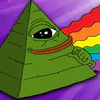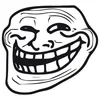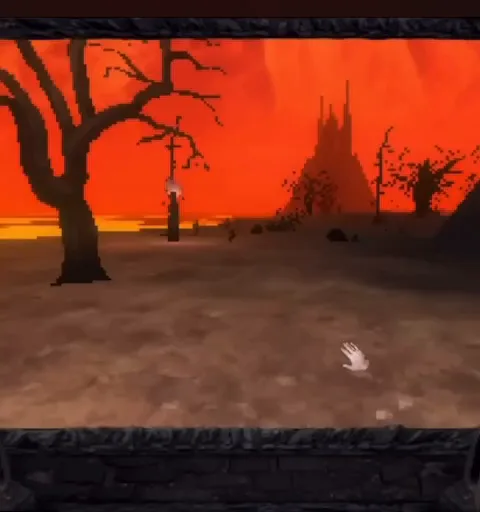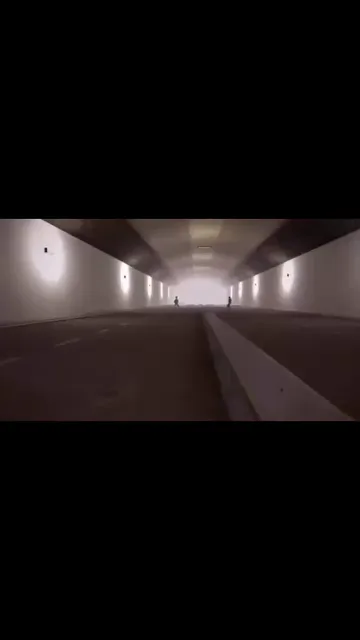Ireland (/ˈaɪərlənd/ ⓘ IRE-lənd; Irish: Éire [ˈeːɾʲə] ⓘ; Ulster-Scots: Airlann [ˈɑːrlən]) is an island in the North Atlantic Ocean, in north-western Europe. It is separated from Great Britain to its east by the North Channel, the Irish Sea, and St George's Channel. Ireland is the second-largest island of the British Isles, the third-largest in Europe, and the twentieth-largest in the world.[10]
Geopolitically, the island of Ireland is divided between the Republic of Ireland (officially named Ireland), an independent state covering five-sixths of the island, and Northern Ireland, which is part of the United Kingdom. As of 2022, the population of the entire island is just over 7 million, with 5.1 million living in the Republic of Ireland and 1.9 million in Northern Ireland, ranking it the second-most populous island in Europe after Great Britain.[11]
The geography of Ireland comprises relatively low-lying mountains surrounding a central plain, with several navigable rivers extending inland. Its lush vegetation is a product of its mild but changeable climate which is free of extremes in temperature. Much of Ireland was woodland until the end of the Middle Ages. Today, woodland makes up about 10% of the island, compared with a European average of over 33%,[12] with most of it being non-native conifer plantations.[13][14] The Irish climate is influenced by the Atlantic Ocean and thus very moderate,[15] and winters are milder than expected for such a northerly area, although summers are cooler than those in continental Europe. Rainfall and cloud cover are abundant.
Gaelic Ireland had emerged by the 1st century AD. The island was Christianised from the 5th century onwards. During this period Ireland was divided into many petty kingships under provincial kingships (Cúige "fifth" of the traditional provinces) vying for dominance and the title of High King of Ireland. In the late 8th century to early 11th century AD Viking raids and settlement took place culminating in the Battle of Clontarf on 23 April 1014 which resulted in the ending of Viking power in Ireland. Following the 12th century Anglo-Norman invasion, England claimed sovereignty. However, English rule did not extend over the whole island until the 16th–17th century Tudor conquest, which led to colonisation by settlers from Britain. In the 1690s, a system of Protestant English rule was designed to materially disadvantage the Catholic majority and Protestant dissenters, and was extended during the 18th century. With the Acts of Union in 1801, Ireland became a part of the United Kingdom. A war of independence in the early 20th century was followed by the partition of the island, leading to the creation of the Irish Free State, which became increasingly sovereign over the following decades until it declared a republic in 1948 ( Republic of Ireland Act, 1948) and Northern Ireland, which remained a part of the United Kingdom. Northern Ireland saw much civil unrest from the late 1960s until the 1990s. This subsided following the Good Friday Agreement in 1998. In 1973, both the Republic of Ireland and the United Kingdom, with Northern Ireland as part of it, joined the European Economic Community. Following a referendum vote in 2016, the United Kingdom, Northern Ireland included, left the European Union (EU) in 2020. Northern Ireland was granted a limited special status and allowed to operate within the EU single market for goods without being in the European Union;[16] the economy has subsequently grown faster than the rest of the UK.[17]
Irish culture has had a significant influence on other cultures, especially in the field of literature. Alongside mainstream Western culture, a strong indigenous culture exists, as expressed through Gaelic games, Irish music, Irish language, and Irish dance. The island's culture shares many features with that of Great Britain, including the English language, and sports such as association football, rugby, horse racing, golf, and boxing.
Etymology
The names Ireland and Éire derive from Old Irish Ériu, a goddess in Irish mythology first recorded in the ninth century. The etymology of Ériu is disputed but may derive from the Proto-Indo-European root *h2uer, referring to flowing water.[18]
History
Main article: History of Ireland
Prehistoric Ireland
Main article: Prehistoric Ireland
During the last glacial period, and until about 16,000 BC, much of Ireland was periodically covered in ice.[19] The relative sea level was less than 50m lower resulting in an ice bridge (but not a land bridge) forming between Ireland and Great Britain.[20] By 14,000 BC this ice bridge existed only between Northern Ireland and Scotland and by 12,000 BC Ireland was completely separated from Great Britain.[21] Later, around 6,100 BC, Great Britain became separated from continental Europe.[22] Until recently, the earliest evidence of human activity in Ireland was dated at 12,500 years ago, demonstrated by a butchered bear bone found in a cave in County Clare.[23] Since 2021, the earliest evidence of human activity in Ireland is dated to 33,000 years ago.[24]
By about 8,000 BC, more sustained occupation of the island has been shown, with evidence for Mesolithic communities around the island.[25]
Some time before 4,000 BC, Neolithic settlers introduced cereal cultivars, domesticated animals such as cattle and sheep, built large timber buildings, and stone monuments.[26][19] The earliest evidence for farming in Ireland or Great Britain is from Ferriter's Cove, County Kerry, where a flint knife, cattle bones and a sheep's tooth were carbon-dated to c. 4,350 BC.[27] Field systems were developed in different parts of Ireland, including at the Céide Fields, that has been preserved beneath a blanket of peat in present-day Tyrawley. An extensive field system, arguably the oldest in the world,[28] consisted of small divisions separated by dry-stone walls. The fields were farmed for several centuries between 3,500 BC and 3,000 BC. Wheat and barley were the principal crops.[19]
The Bronze Age began around 2,500 BC, with technology changing people's everyday lives during this period through innovations such as the wheel, harnessing oxen, weaving textiles, brewing alcohol and metalworking,[19] which produced new weapons and tools, along with fine gold decoration and jewellery, such as brooches and torcs.
Emergence of Celtic Ireland
How and when the island became Celtic has been debated for close to a century, with the migrations of the Celts being one of the more enduring themes of archaeological and linguistic studies. The most recent genetic research strongly associates the spread of Indo-European languages (including Celtic) through Western Europe with a people bringing a composite Beaker culture, with its arrival in Britain and Ireland dated to around the middle of the third millennium BC.[29] According to John T. Koch and others, Ireland in the Late Bronze Age was part of a maritime trading-network culture called the Atlantic Bronze Age that also included Britain, western France and Iberia, and that this is where Celtic languages developed. This contrasts with the traditional view that their origin lies in mainland Europe with the Hallstatt culture The long-standing traditional view is that the Celtic language, Ogham script and culture were brought to Ireland by waves of invading or migrating Celts from mainland Europe. This theory draws on the Lebor Gabála Érenn, a medieval Christian pseudo-history of Ireland, along with the presence of Celtic culture, language and artefacts found in Ireland such as Celtic bronze spears, shields, torcs and other finely crafted Celtic associated possessions. The theory holds that there were four separate Celtic invasions of Ireland. The Priteni were said to be the first, followed by the Belgae from northern Gaul and Britain. Later, Laighin tribes from Armorica (present-day Brittany) were said to have invaded Ireland and Britain more or less simultaneously. Lastly, the Milesians (Gaels) were said to have reached Ireland from either northern Iberia or southern Gaul.[35] It was claimed that a second wave named the Euerni, belonging to the Belgae people of northern Gaul, began arriving about the sixth century BC. They were said to have given their name to the island.[36][37]
The theory was advanced in part because of the lack of archaeological evidence for large-scale Celtic immigration, though it is accepted that such movements are notoriously difficult to identify. Historical linguists are skeptical that this method alone could account for the absorption of Celtic language, with some saying that an assumed processual view of Celtic linguistic formation is 'an especially hazardous exercise'.[38][39] Genetic lineage investigation into the area of Celtic migration to Ireland has led to findings that showed no significant differences in mitochondrial DNA between Ireland and large areas of continental Europe, in contrast to parts of the Y-chromosome pattern. When taking both into account, a study concluded that modern Celtic speakers in Ireland could be thought of as European "Atlantic Celts" showing a shared ancestry throughout the Atlantic zone from northern Iberia to western Scandinavia rather than substantially central European.[40] In 2012, research showed that the occurrence of genetic markers for the earliest farmers was almost eliminated by Beaker-culture immigrants: they carried what was then a new Y-chromosome R1b marker, believed to have originated in Iberia about 2,500 BC. The prevalence amongst modern Irish men of this mutation is a remarkable 84%, the highest in the world, and closely matched in other populations along the Atlantic fringes down to Spain. A similar genetic replacement happened with lineages in mitochondrial DNA.[27][41] This conclusion is supported by recent research carried out by the geneticist David Reich, who says: "British and Irish skeletons from the Bronze Age that followed the Beaker period had at most 10 per cent ancestry from the first farmers of these islands, with other 90 per cent from people like those associated with the Bell Beaker culture in the Netherlands." He suggests that it was Beaker users who introduced an Indo-European language, represented here by Celtic (i.e. a new language and culture introduced directly by migration and genetic replacement) The earliest written records of Ireland come from classical Greco-Roman geographers. Ptolemy in his Almagest refers to Ireland as Mikra Brettania ("Little Britain"), in contrast to the larger island, which he called Megale Brettania ("Great Britain").[42] In his map of Ireland in his later work, Geography, Ptolemy refers to Ireland as Iouernia and to Great Britain as Albion. These 'new' names were likely to have been the local names for the islands at the time. The earlier names, in contrast, were likely to have been coined before direct contact with local peoples was made.[43]
The Romans referred to Ireland by this name too in its Latinised form, Hibernia, or Scotia.[44][45] Ptolemy records sixteen nations inhabiting every part of Ireland in 100 AD.[46] The relationship between the Roman Empire and the kingdoms of ancient Ireland is unclear. However, a number of finds of Roman coins have been made, for example at the Iron Age settlement of Freestone Hill near Gowran and Newgrange.[47]
Ireland continued as a patchwork of rival kingdoms; however, beginning in the 7th century, a concept of national kingship gradually became articulated through the concept of a High King of Ireland. Medieval Irish literature portrays an almost unbroken sequence of high kings stretching back thousands of years, but some modern historians believe the scheme was constructed in the 8th century to justify the status of powerful political groupings by projecting the origins of their rule into the remote past.[48]
All of the Irish kingdoms had their own kings but were nominally subject to the high king. The high king was drawn from the ranks of the provincial kings and ruled also the royal kingdom of Meath, with a ceremonial capital at the Hill of Tara. The concept did not become a political reality until the Viking Age and even then was not a consistent one.[49] Ireland did have a culturally unifying rule of law: the early written judicial system, the Brehon Laws, administered by a professional class of jurists known as the brehons.[50]
The Chronicle of Ireland records that in 431, The same chronicle records that Saint Patrick, Ireland's best known patron saint, arrived the following year. There is continued debate over the missions of Palladius and Patrick, but the consensus is that they both took place[52] and that the older druid tradition collapsed in the face of the new religion.[53] Irish Christian scholars excelled in the study of Latin and Greek learning and Christian theology. In the monastic culture that followed the Christianisation of Ireland, Latin and Greek learning was preserved in Ireland during the Early Middle Ages in contrast to elsewhere in Western Europe, where the Dark Ages followed the Fall of the Western Roman Empire.



















11 comments